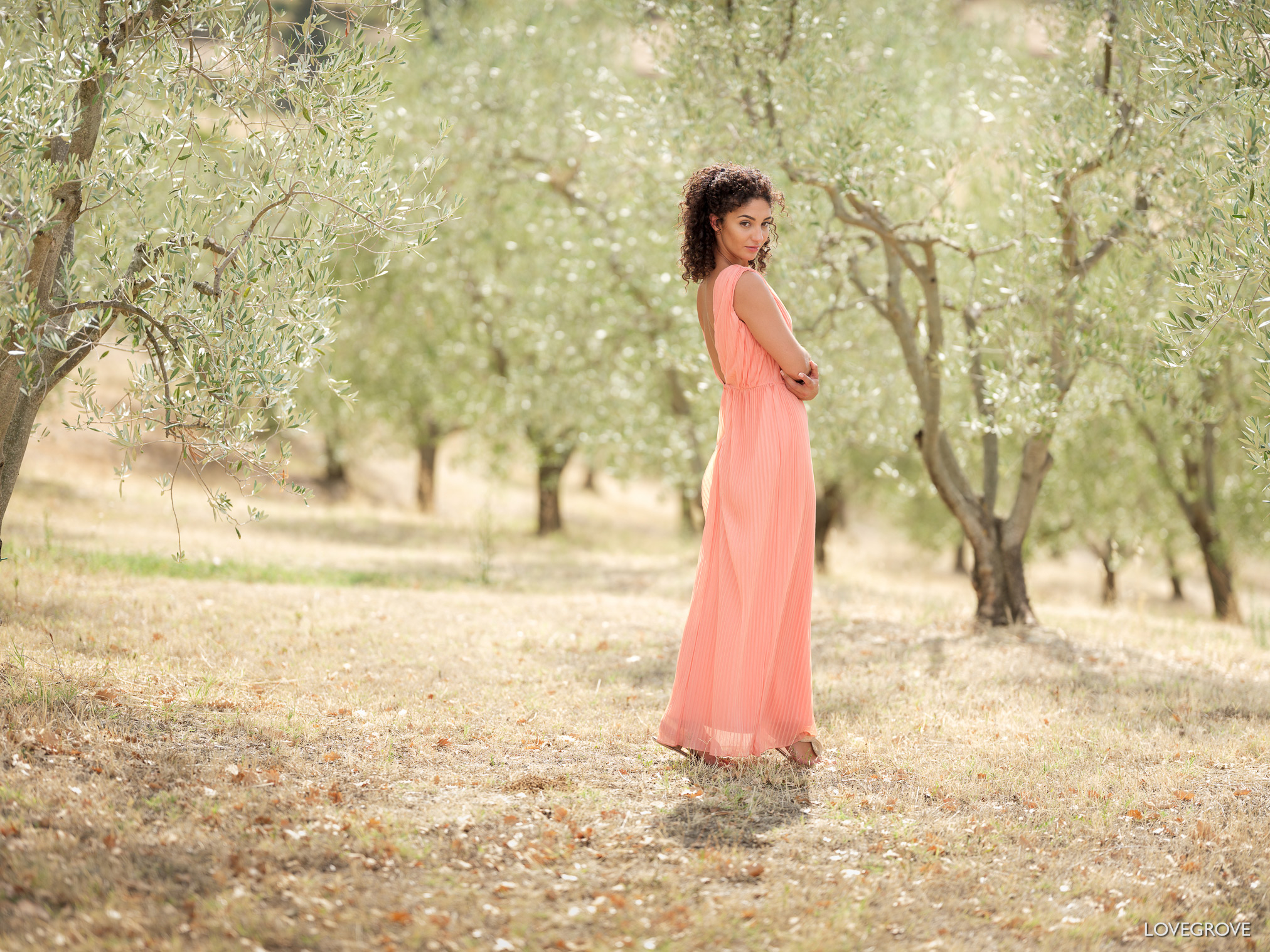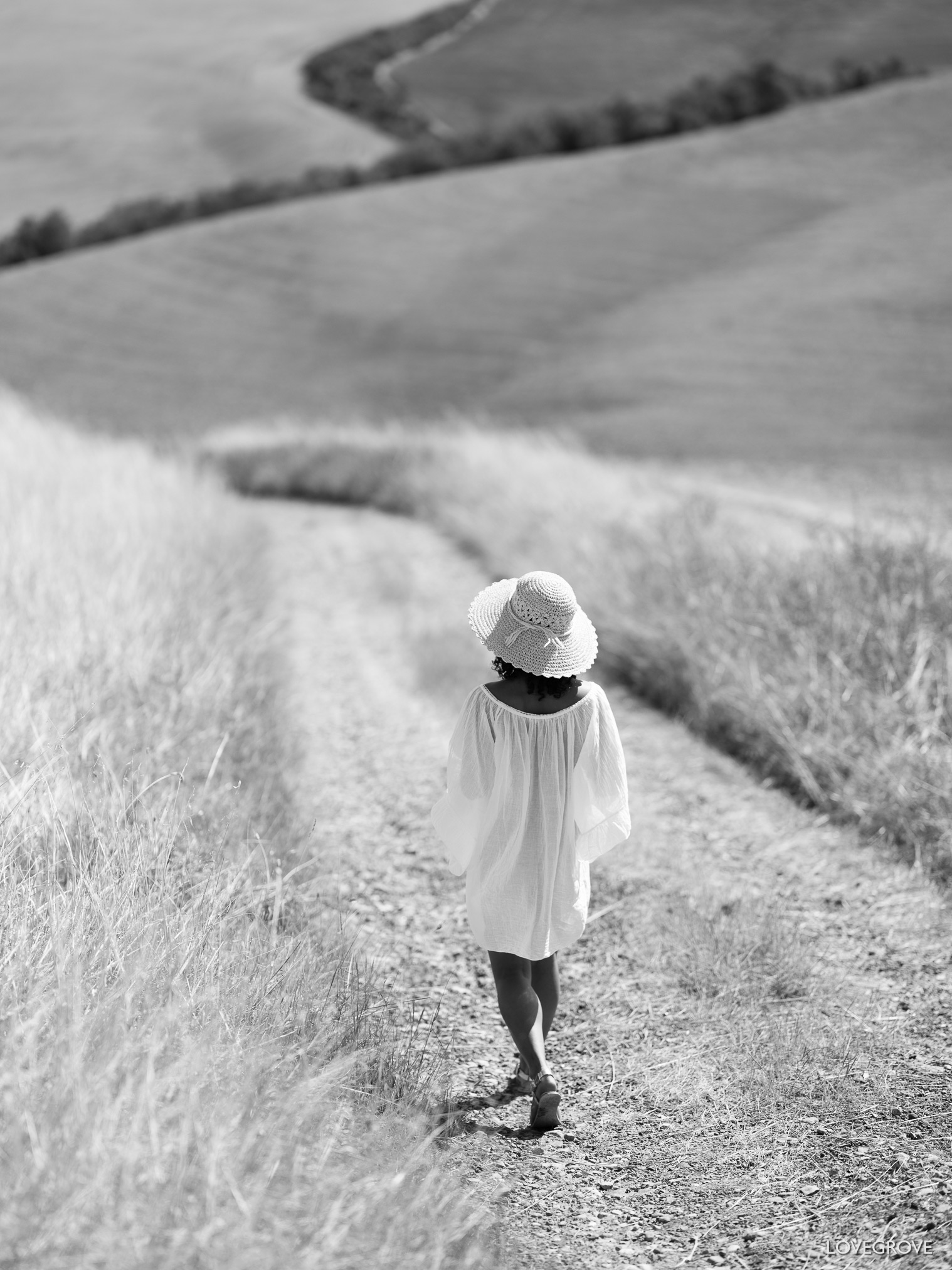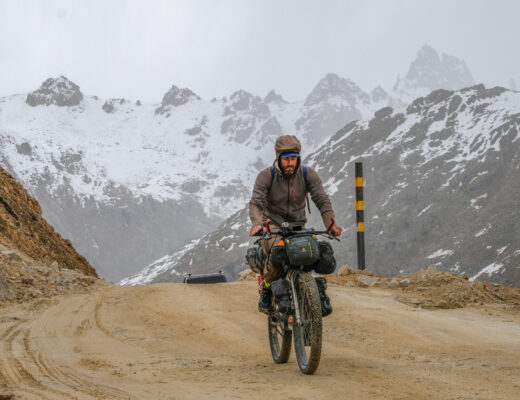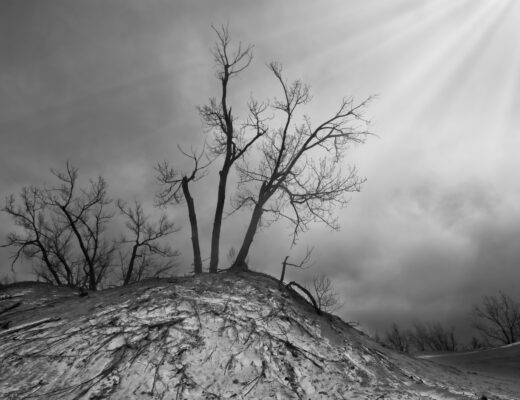This month I’m looking at portraits taken with Fujifilm cameras that encompass the bigger picture. These are harder to take than regular headshot or mid shot portraits because of the larger backgrounds needed. These are either rendered in focus or nearly in focus so careful composition of the background becomes a key factor.

01. The words ‘figure in the landscape’ conjures up thoughts of Wuthering Heights. I shot this frame on Dartmoor in the UK. A splash of flash can really change the look of an image like this but the width of the shot means the flash is quite a long way from the subject. That distance meant I needed two AD600 packs feeding the Godox 1200Ws head on a boom arm.
The curse of the 70-200mm lens. It must have been way back in 1996 when I bought my first 70-200mm f/2.8 lens. It seemed to take magical pictures. I could literally shoot a headshot anywhere and knock the background into oblivion when I used f/2.8. It was so easy to take reasonable people pictures it seemed like cheating. At that point my love affair with the fast telephoto lens had begun. Fujifilm now produce their own version of the classic 70-200mm in the guise of the XF 50-140mm f/2.8 OIS and it is fabulous. It has taken me this past 20 months shooting exclusively with just two lenses on the GFX to rid myself of the telephoto addiction. I now spend more time shooting the bigger picture and I’m loving shooting full length portraits again.
Print it big. I’ve always printed my work and I have drawers containing several hundreds of prints in an architects plan chest. I also have two leather bound A3 portfolios too that I keep my current work in. Printing is the completion of the job for me. Although I publish a lot of my work online it’s the print that I relish.
(Click on any of these photographs in this feature to appreciate them at a larger resolution)
Golden nugget. One valuable bit of advice I was given when I started my career in photography is: “The smaller the subject is in the picture the larger the print you will sell.” This was so true. I never sold a large print of a headshot.
Tip: Whatever your genre, If you are shooting to make wall prints for your home have the final location in mind with regards to aspect ratio and camera orientation. Above a sofa or a bed is the perfect space for a horizontal print 1.5m to 2m wide. A cinematic crop often helps the print make an impact in this part of a room. Most other locations in a home are better suited to a portrait camera orientation.
Lens choice. Don’t assume that wide angle lenses are best for this kind of work. Any focal length from moderate wide angle to telephoto is fine. The longer the lens the further back you have to work but the easier it is to keep the sky out of the shot. I rarely include sky in my shots unless it is dramatic. The further back or wider I can work the better the shots become. “If in doubt, zoom out” is the quote in the back of my mind and it certainly contrasts with Capa’s famous quote “If your pictures are not good enough you are not close enough.”

04. I love to shoot full length interior portraits too. I shot this image square on to this side of a shuttered door and included the abandoned factory in the background for depth. A bright point on the horizon is a classical painters trick to portray distance. I lit this frame from the left with a Godox AD600 with a 18cm reflector.
Size matters. As a general rule of thumb the smallest your subject should be in the frame is about 10%. If the shot is to be printed very large then you can get away with a smaller subject but you will need more pixels. If your subject is small in the frame then the viewing distance rule for resolution goes out of the window. The viewer of a figure in the landscape print will close on into the subject. I see this happen a lot in galleries. In contrast a big headshot can be best viewed from a distance without the need to get close so a 12 megapixel camera is enough even for a bill board size headshot. A figure in the landscape print by contrast lures viewers in close and the 50 megapixels of the GFX is certainly justified when making big prints with small subjects.

07. I start my shooting process by setting the composition of the shot. I use a tripod so that once that is set I can adjust elements in the frame like removing rubbish or changing the position of any lighting equipment without having to start again with the framing. This makes the process faster for me than working hand held. I also get to use ISO 100 as I can set the shutter speed low without the risk of camera shake. Once the shot is set I place my subject in the frame. I do like to force the composition away from the normal rules of having the person in the shot looking into the frame.
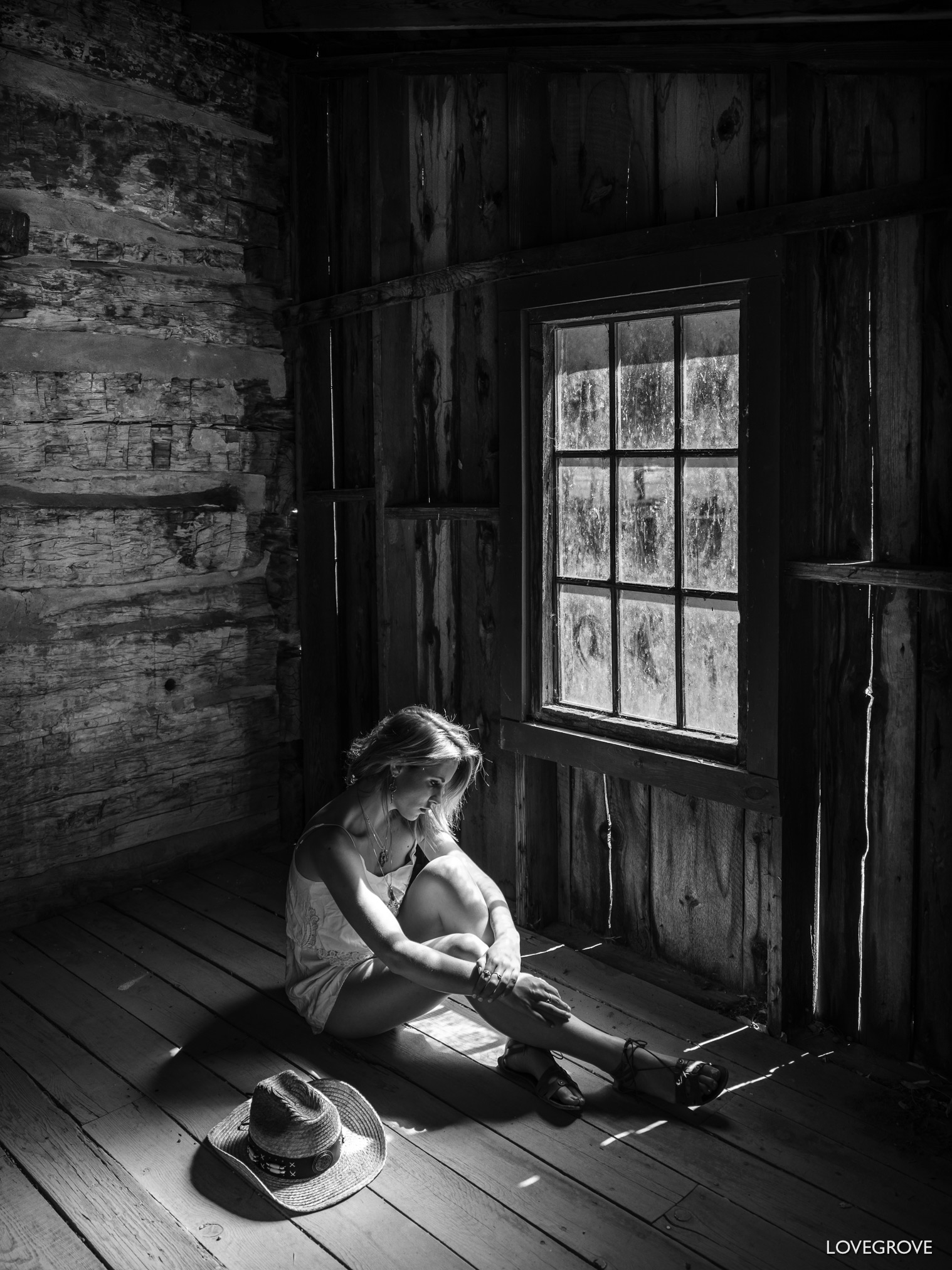
09. Negative space can add to the narrative of the shot. I shot this portrait from a high viewpoint to create a feeling of isolation and vulnerability. I kept the back of the camera upright to keep the perspective straight and this gave a lot of negative space at the top of the frame that added to the solitude.
All the shots here were taken using the Fujifilm GFX50s camera with either the GF 32-64mm lens or the GF 110mm lens. Clicking on any of the shots will open a higher resolution version. Feel free to comment on these shots or this article below.





